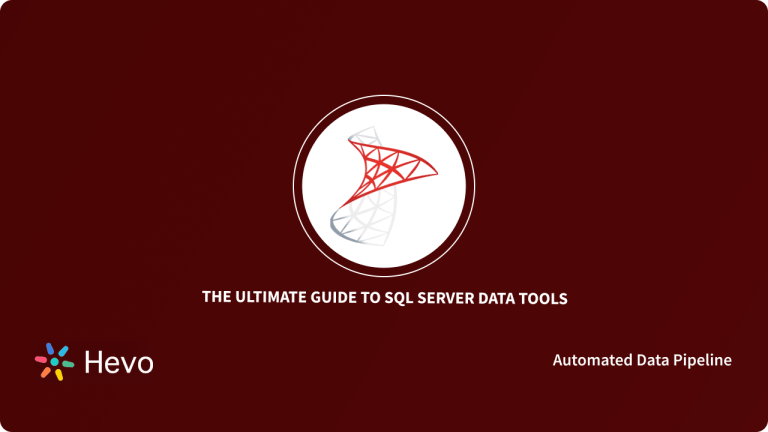SQL Server is one of the leading Database Management systems in the market. It has established itself as an easy-to-use, reliable and efficient system. It provides a wide range of functionality as well. It works on SQL and like any other DBMS, under a wide range of scenarios, the system doesn’t provide the level of efficiency you require. This article tries to tackle the issue by providing tips and tricks for performance tuning in SQL Server.
Table of Contents
What is Performance tuning in SQL server?
Performance Tuning in SQL server ensures that SQL statements issued by your application execute as quickly as possible. In other words, optimizing a SQL statement means finding and executing the fastest route to answer a query, much like finding the fastest route to get home after work.
In medium and large enterprises, SQL database tuning is typically done by a database administrator (DBA), and developers often also tune SQL Server performance.
There are several ways to do performance tuning in SQL Server. Here are some tips and tricks to help you streamline the performance tuning process for your SQL Server service.
Unlock the power of your SQL Server data by seamlessly connecting it to various destinations, enabling comprehensive analysis in tools like Google Data Studio.
Check out Why Hevo is the right choice for you!
- No-Code Platform: Easily set up and manage your data pipelines without any coding.
- Auto-Schema Mapping: Automatically map schemas for smooth data transfer.
- Pre and Post-Load Transformations: Transform your data at any stage of the migration process.
- Real-Time Data Ingestion: Keep your data up-to-date with real-time synchronization.
Join over 2000 happy customers who trust Hevo for their data integration needs and experience why we are rated 4.7 on Capterra.
Get Started with Hevo for FreeTips for Performance Tuning in SQL server
Database tuning is a combination of altering various parameters sometimes totally unrelated, something like combining art and science. There is no particular solution to achieving proper performance tuning in SQL server, since the issues may vary from system to system i.e, an issue for you may not be the same for other users and vice versa.
Therefore, performance tuning in SQL Server is a very complex and demanding task. Since the issues and expected results are different, performing the smallest changes can have a widespread and long-term impact on the performance of the SQL servers. These tweaks are generalized based on the various different issues and can improve the speed with which the SQL queries are executed.
Performance Tuning in SQL server mainly deals with the poorly written SQL queries that may have an impact on execution speeds due to higher complexities and with indexes that are inefficient. The below-mentioned methods are efficient in improving the performance of Query in a noticeable and measurable way and cater to most issues
1)Performance Tuning in SQL server: Index Improvements
Indexes are data structures that speed up data retrieval operations on database tables. Creating a meaningful index is one of the most important steps to optimize SQL Server performance. Convenient indexes provide fast random searches and help you find data that consumes less disk I / O operations and system resources.
Before creating an efficient index, it is important to understand the nature of the query and how often the query is executed. Try to index the most important search and sort columns. However, indexing can impact database performance if the table is constantly loaded with INSERT, UPDATE, and DELETE. You should use appropriate data types to reduce memory usage and enhance SQL Server performance. You can also leverage BI tools to analyze performance and identify slow-running queries.
2)Performance Tuning in SQL server: Separating datafiles and logfiles
If you use DAS or SAN, you must separate the data files and log files into arrays of different physical drives. This practice is often ignored, but there is no good reason to miss it.
The main purpose of this approach is to separate random access to the data from the sequential access that occurs when writing the transaction log. This technique will surprise you with the differences that can occur as the volume of transactions increases.
3)Performance Tuning in SQL server: Reducing the use of temporary tables
Temporary tables tend to increase the complexity of your queries. If your application uses tempdb too often or creates temporary tables too much, it can cause conflicts related to the internal structure associated with the tempdb file.
If you really need to use a temporary table, index it in the temporary table to improve performance. More importantly, instead of waiting for the temporary table to be automatically dropped, drop the temporary table as soon as the table is used up and clear the tempdb resource.
4)Performance Tuning in SQL server: I/O Bottlenecks
bottlenecks caused by Inputs and outputs are one of the key factors that reduce performance in SQL Server. Detect the I/O issues by using one of the following techniques:
- Search and find pages with high page_IO_latch waits or log_write waits in your wait statistics of SQL server.
- Use the DMF sys.dm_io_virtual_file_stats() to find areas where there is a high load on external I/O which can cause excessive stalls on that I/O.
- Use the trusty PerfMon counters or use the Avg. Disk sec/Read and Avg. Disk sec/Write counters can help in determining the latency of query execution and input-output received.
Once you find the I/O bottlenecks, detect the queries that are contributing to the physical I/O, and try to tune them before adding more hardware.
5)Performance Tuning in SQL server: Avoid Loops
Let us think of a situation in which about 1000 queries are directed to your database in sequence:
For Performance Tuning in SQL Server, Such loops should be avoided in the code. you can use a unique INSERT or UPDATE statement with multiple rows and values instead of these loops:
Also, the use of the Where clause doesn’t update the stored value if there is a matching existing value in the database. This method is very beneficial as it drastically improves efficiency and can be used for Performance Tuning in SQL servers.
6)Performance Tuning in SQL server: Avoid the Use of SELECT
One of the tips for performance tuning in SQL server is to query all the columns, i.e usage of the “SELECT * ” statement. When there is a requirement of specific columns, retrieving individual columns reduces the query times and a query runs faster since less data needs to be skimmed.
7)Performance Tuning in SQL server: Avoid Correlated Subqueries
A correlated subquery uses values from the parent query. It usually runs row-by-row, once for each row returned by the outer query, thereby decreasing SQL query performance. The following is an example of a correlated subquery:
In the above example, the inner query (SELECT CompanyName…) is run for each row returned by the outer query (SELECT c.Name…). Why go over the same row again and again and slow down the SQL Server?
Instead, refactor the correlated subquery as a join:
This lets the query go over the Company table just once, at the onset, and JOIN it with the Customer table.
8)Performance Tuning in SQL server: Do Not Shrink Data Files
Performance of SQL server is negatively impacted by Shrinking the Data Files. The process of shrinking the data files is in itself a cumbersome task. Shrinking also causes the generation of fragments – a lot of it – which results in poor performance of queries that will be executed subsequently. If Instant File Initialization is not turned on, the resultant growth later may potentially cause timeouts and can also affect the performance.
At instances shrinking a document is simply necessary. However, take into account, to research the effect earlier than you attempt it.
What is a SQL Server?
- SQL Server is a relational database management system or RDBMS developed and distributed by Microsoft.
- Like other RDBMS software, SQL Server is based on SQL, the standard programming language for interacting with relational databases. SQL Server is associated with Microsoft’s implementation of SQL, Transact-SQL or TSQL, and adds a number of unique programming structures.
- SQL Server has been running only in a Windows environment for over 20 years. SQL server was allowed for Linux in 2016. SQL Server 2017 was generally available in October 2016 and ran on both Windows and Linux.
Database Engine
Database Engine is the core component of a SQL server. The database engine is future divided into two components:
- Relational Engine: It is used for processing queries.
- Storage Engine: It is used to manage pages, database files, indexes, etc.
Database Engine creates and executes the database objects such as stored procedures, views, and triggers. Let’s discuss in detail the components of Database Engine
Relational Engine
- A relational Engine is also called a Query Processor. The Relational Engine consists of different components that help in determining the best methodology that can be used to execute a query.
- The Relational Engine takes the data from the storage engine based on the requirement of the input query and then processes the result.
- Relational Engines can perform various operations such as query processing, thread and task management, memory management, buffer management, and many more.
Storage Engine
The storage engine is in charge of storage and retrieval of data from the storage systems such as disks and SAN.
SQLOS
This is the second component of the SQL server. For running the engines of the SQL server you would require an SQLOS or SQL server Operating System. It is an Operating System designed for SQL servers that provide functionality such as memory management, exception handling, synchronization, and many more
Conclusion
- These do(s) and don`t(s) will assist you whilst writing queries or techniques and could aid you for overall performance tuning in SQL Server.
- However, do not forget to assess every state of affairs to recognize which approach works nicely on your database.
- SQL Server is a trusted source that a lot of companies use as it provides many benefits but transferring data from it into a data warehouse is a hectic task.
- The Automated data pipeline helps in solving this issue and this is where Hevo comes into the picture. Hevo Data is a No-code Data Pipeline and has awesome 100+ pre-built Integrations that you can choose from.
FAQ on Performance Tuning in SQL
How do we do performance tuning in SQL?
SQL performance tuning involves optimizing queries by using indexes, avoiding unnecessary joins, limiting data retrieval with WHERE clauses, and analyzing execution plans to identify bottlenecks.
What is database performance tuning?
Database performance tuning is the process of adjusting database configurations, indexes, queries, and hardware resources to improve data retrieval and overall system performance.
What is performance tuning?
Performance tuning is the practice of improving the speed and efficiency of software, databases, or systems by optimizing processes, resources, and configurations.
How to optimize SQL view performance?
To optimize SQL view performance, limit the number of columns selected, avoid complex joins or aggregations, create indexes on referenced columns, and precompute frequent calculations if possible.










